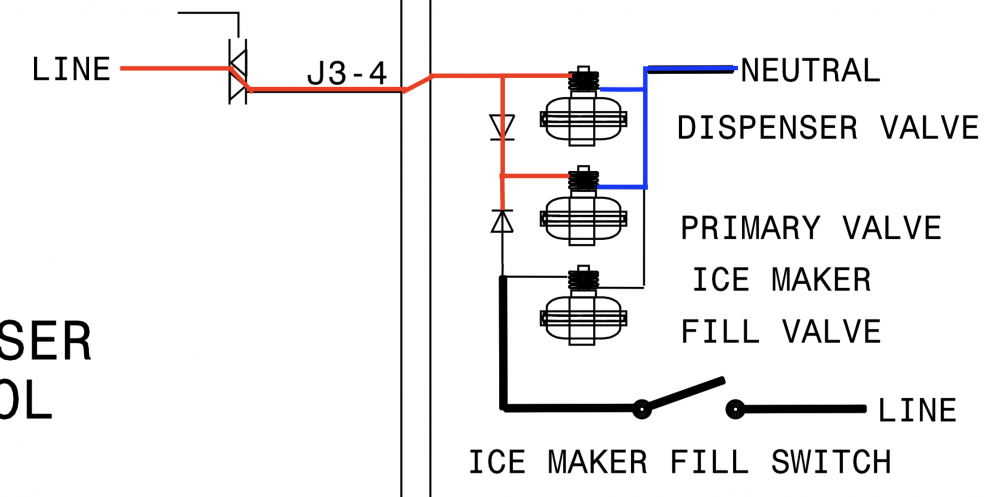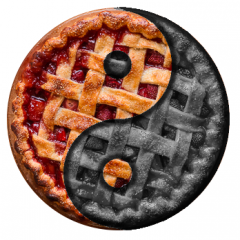How Refrigerator Water Systems Work
There's a very common configuration of valves that are used in refrigerators with ice makers and dispensers -- so common that every tech should be very familiar with how it works and what terms are used to refer to it. You can't troubleshoot what you don't understand!
We'll use a GE refrigerator as our example, but this same system is used across almost all refrigerators with water supplies. Here's a snippet from a GE manual:

All this is saying is that you have three valves in this system (or two if you just have an ice maker and no dispenser).
The isolation valve, as it is most commonly called, is the valve that all water has to pass through in order to enter the refrigerator. As its name suggests, it isolates the refrigerator's internal tubing from house pressure. In order for either the ice maker or the dispenser to receive water, the isolation valve has to be energized in addition to the relevant valve.
"Isolation valve" is the most common name for valves that serve this purpose, but you'll see manufacturers call them a variety of things -- main valve, primary valve, even pilot valve. Whatever it's called, it's important that you understand its function as the valve that all water has to flow through to enter the refrigerator.
The other two valves -- the dispenser and ice maker valves -- are pretty self explanatory. When water is called for at the ice maker or dispenser, the relevant valve is energized, along with the isolation valve. In the snippet from the GE manual above, they refer to these two valves as being two parts of a dual valve. That's quite common, and it doesn't in any way change the separate functions of these two valves.
In our GE refrigerator, the board powers each valve separately. So in this case, the algorithm has to know to switch power to the isolation valve in addition to whichever of the secondary valves is being powered.
But in other cases, such as most Electrolux refrigerators, you'll see a diode configuration like this. This allows the engineers to design the circuit with less programming required for the board. If you don't know how this circuit works, check out this blog post I've written on diodes.
And there you see them calling the isolation valve a "primary valve". But again, it's the same valve serving the same purpose.
Want to learn more than just the basics about the technology and troubleshooting techniques that are involved in repairing refrigerators? Click here to check out the Advanced Refrigerator Repair Course, one of many technical courses that we offer at the Master Samurai Tech appliance repair school.
-
.png) 7
7








0 Comments
Recommended Comments
There are no comments to display.